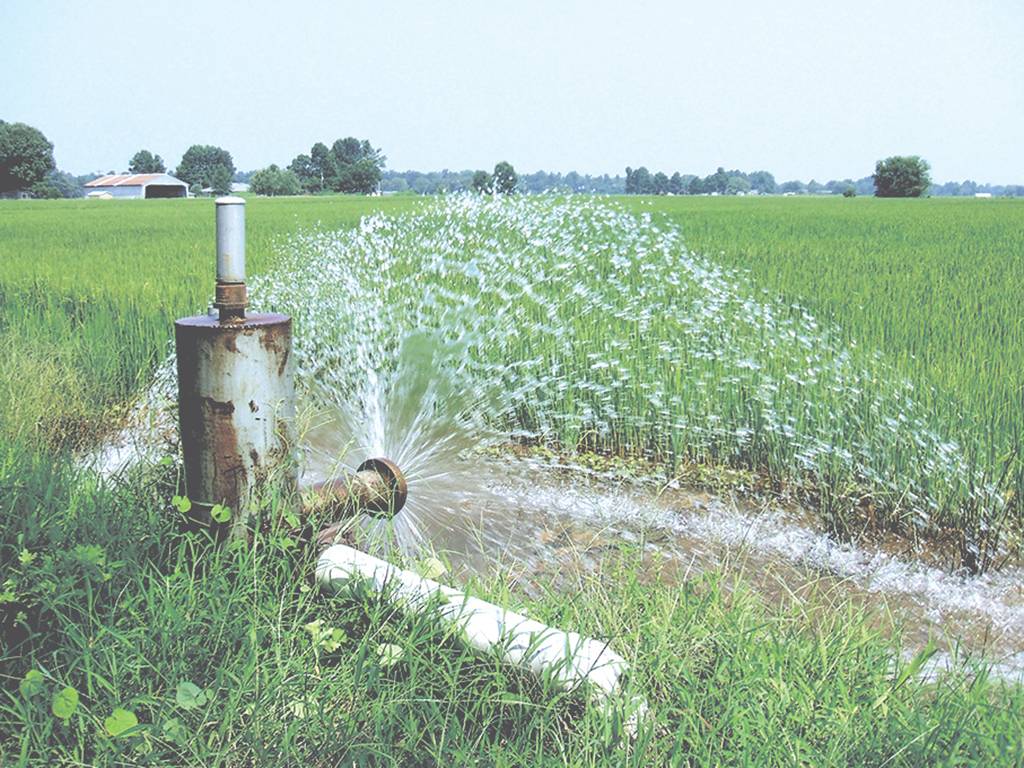
With the present DMK government on track to meet an ambitious goal of providing one lakh farm electrical connections per year, attention has shifted to the importance of groundwater irrigation in Tamil Nadu.
Given the state's natural characteristics, and the Cauvery being the only large river capable of meeting the state's irrigation needs, it's no surprise that groundwater irrigation is a top priority. However, the amount of net land irrigated by wells has increased significantly only since the 1990s. It stayed at around 10 lakh hectares during the 1980s. However, it increased by around 4.5 lakh hectares between 1990 and 2000, with its proportion topping 50%. Groundwater irrigates around 62 percent of the net irrigated land today.
A variety of factors influenced the outcome. The decline of tanks as a source of irrigation signalled the beginning of the development of groundwater irrigation. Water bodies have lost their role as a source of water for agriculture as a result of urbanisation, conversion of cultivable fields into real estate plots, and encroachment.
The AIADMK's free power supply scheme, which began with small and marginal farmers in 1984 and was later expanded by the DMK administration six years later to include large farmers, was a game-changer. Currently, the state has almost 23 lakh agricultural connections, all of which have access to free electricity. All of the wells, even open wells, are invariably powered by electricity.
"Let's look at the case of coconut. Tamil Nadu's productivity outperforms not only the national average, but also Kerala's. Because of the availability of groundwater, this has become possible," says the academician. According to data published on the website of the Coconut Development Board, a body under the Union Ministry of Agriculture and Farmers' Welfare, Tamil Nadu's productivity was 12,280 nuts per hectare in 2019-20, while the all-India average was 9,345 and Kerala's was 9,175.
Even in the Cauvery delta, one-fourth of the region is dependent on groundwater, according to P.R. Pandian, a Mannargudi-based agriculturist and a known proponent of groundwater irrigation and the free power supply scheme. Instead of a 24-hour electricity supply, he proposes that the authorities determine the duration of supply based on the needs of farmers in a given area.
Former administrators who dealt with agriculture or served in the State's western districts, a region noted for having a big number of farm pumpsets, are among those who support the scheme. Former Coimbatore Collector C.P. Singh claims that the district has become the country's leading producer of pumpsets, which he claims would not have happened if the state government had not taken proactive measures to assist the energization of farm pumpsets.
Santhanam, a former Collector of Coimbatore and a resident of Villupuram, says the availability of electrified pump sets allows farmers to cultivate paddy during the summer because the season is good for farmers because they will not have to deal with pests. Simultaneously, he agrees that farmers should be educated about the importance of growing less water-intensive crops from March to May.
R. Kannan, who previously served as Erode Collector and later as Agriculture Commissioner and Secretary, advocates for the creation of a well-defined set of regulations for groundwater development and extraction, which he believes should be rigorously implemented. He goes on to say that technology should be used to recharge groundwater.
Even among farmers, there are those who advocate for a more conservative use of electricity and water. K.V. Elankeeran, a farmer-leader from Cuddalore's Kattumannarkoil, claims that groundwater can now be found only at a depth of 600 feet, as opposed to 200 feet previously. "We have the obligation of leaving behind an earth that is a better environment to live in for future generations than what we received," he believes.
Despite certain troubling trends in groundwater extraction, the state appears to be making significant headway in the replenishing field. A comparison of groundwater resources in 2017 and 2020, conducted by a team of specialists from the Central and State governments, shows that the number of over-exploited assessment units has decreased from 465 to 435, and the number of critical units has decreased from 79 to 63.
The free electricity supply scheme can continue for reasons of food security and livelihood, but authorities should require, according to an agricultural expert, that the provision of connections be tied to the use of micro-irrigation (drip or sprinkler). The government may even strengthen its micro-irrigation subsidy programme to entice more people to participate.
















